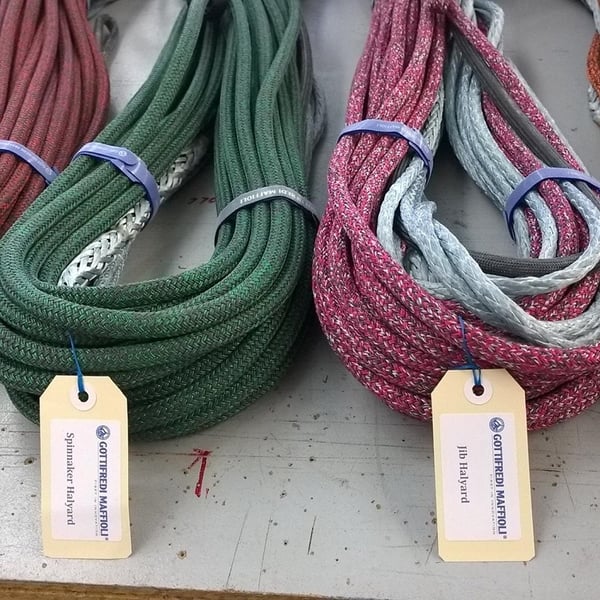
If you are looking at upgrading your running rigging, before you delve into the manufacturers catalogues there are a few key terms you need to understand.
Single Braid
A Single braid is a braided core that has no jacket. Generally, single braids consist of a 12-strand braid of Dyneema® fibres which have been treated with a polyurethane coating to resist abrasion, improve handling and maintain the rope’s uniformity. Single Braids are all about maximising strength and stiffness for minimum weight. They are used as halyards and control lines on dinghys and GP race boats and extensively for loops, strops and lashings on all boats due their flexibility, ease of splicing and general handling.
 Double Braid
Double Braid
A Double braid is a core of single braid with a braided jacket. The core provides the primary strength and stiffness of the rope but the braided jackets define the handling and holding properties. There are a myriad of different fibres and fibre blends used to make outer braids grip or slip better, feel softer or harder to the hand and increase abrasion or heat resistance depending on the specific application.

Rope Strength
Strength of ropes is generally measured in daN (Dekanewtons) where 1 daN = 10 N of force. But why do rope makers use daN where most marine equipment manufacturers use kilograms (kg) for working / break loads? The use of kilograms is technically incorrect – it should really be kilogram-force but this is abbreviated by most suppliers to just kg. We suspect kg is considered an easier unit for customers to understand, but N or daN is technically a more accurate way to describe the force required to break a fitting or rope.
It is very difficult to specify the break load of a rope as it depends on how the rope is terminated or secured for the test. Most reputable rope makers specify the “spliced strength” of the rope, but this is completely dependent on the quality of the splice and the radius of the pin used on the test bench. Therefore, all rope break strengths are “nominal” values but can be used to show relative strength between different ropes from the same manufacturer.
In conclusion, 10 daN is equivalent to 10.19 kgf and given the nominal nature of rope break loads, daN and kg can be safely assumed to be equivalents when it comes to specifying compatible hardware and running rigging.
If you have any questions about ropes, please feel free to email us at support@upffront.com, or click the link below to see our full range:



